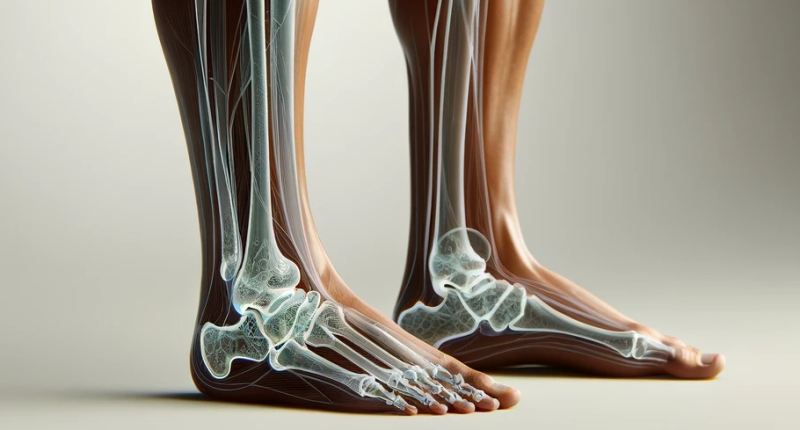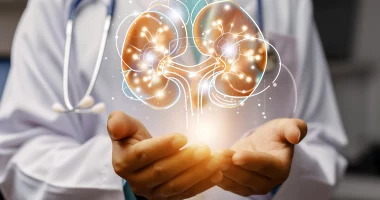Osteomyelitis
What is osteomyelitis?
Osteomyelitis is a bone lesion of an infectious nature. Inflammatory changes cover the bone marrow, spongy layer, compact substance, and periosteum. Often the infection passes to the surrounding tissues (muscles, fiber). Structural and functional disorders in other body systems accompany osteomyelitis.
According to statistics, pathology is more often developed due to trauma. The propensity to osteomyelitis is found in the elderly, children, and persons with immune disorders. Among non-disabled adults, men are more often affected.
The soft matter (bone marrow) is the first to suffer when the infection enters the bone. Inflammatory edema provokes microcirculatory disorders, due to which pathological changes spread to other bone layers. Purulent-necrotic foci are formed in the bone tissue. It is possible to form abscesses and fistulas that open through the skin. Infection can spread to other organs and tissues, provoking inflammation and purulent changes in them.
Types of osteomyelitis
Focusing on the causative agent, osteomyelitis can be:
- non-specific – provokes staphylococcus, E. coli, and some fungi;
- specific – a complication of systemic infectious diseases (syphilis, tuberculosis, brucellosis).
According to the pathways of infection into the bone, pathology occurs:
- exogenous – microorganisms are brought in from outside (during wounds, fractures, surgeries, inflammation of soft tissues);
- endogenous – the pathogen is carried with the bloodstream from the focus of inflammation in the body (dental caries, tonsillitis, sinusitis, furunculus, phlegmon).
Depending on the severity of the manifestations, osteomyelitis can be acute and chronic. The second variant occurs against the background of atypical development of the disease or in specific osteomyelitis.
Pathology is classified into forms depending on the features of development:
- septic-pyemic – accompanied by vivid symptomatology, a significant syndrome of intoxication of the body;
- local – the general condition of the patient is satisfactory, local manifestations of inflammation predominate;
- toxic – develops fulminant with weak local symptoms, which makes it difficult to diagnose.
Symptoms of osteomyelitis
Manifestations of osteomyelitis depend on the form of the disease, the way of penetration of infection into the body, localization, and the degree of inflammation in the bone and surrounding tissues.
Acute forms are characterized by a period of “precursors” accompanied by weakness, drowsiness, and body pain. Then, there is an increase in temperature to febrile values. The patient has manifestations of intoxication, which include weakness, chills, pain in the head and body, nausea, and vomiting. In severe cases, there are blood pressure fluctuations, heart rhythm failures, convultions, and loss of consciousness due to bacterial intoxication.
Local manifestations of osteomyelitis:
- pain in the affected area (drilling, expanding, tearing, burning);
- swelling of the tissue over the inflamed bone;
- skin hyperemia, vascular dilation;
- localized fever;
- purulent tissue melting (abscesses or phlegmon).
The patient’s well-being improves when the acute form transitions to the chronic form. The pain subsides and becomes aching. On the surface of the skin (often far from the main focus) fistulous passages are formed, from which a moderate amount of pus is released.
At the remission stage, the patient’s condition normalizes; the fistulous passages emit pus sparingly, and sometimes they close on their own. Remission can last from a month to several years, which depends on the localization and extensiveness of the main focus, as well as the general state of health of the patient.
Relapses occur against the background of decreased immunity, exacerbation of chronic diseases, exhaustion, and accumulation of large amounts of pus as a result of the closure of the fistulous passage. In the exacerbation of osteomyelitis, the patient resumes pain and symptoms of intoxication and begins to release pus through the skin.
Causes of osteomyelitis
The cause of the disease is infection of bone tissue. Pathogens enter the bones through blood from inflammatory foci inside the body and from the outside in case of contamination of open wounds, pathogen contamination of endoprostheses, and aggressive course of infectious processes in soft tissues. Rarely, inflammation develops due to disorders of blood supply to the bone.
In the risk zone for the development of osteomyelitis are children and the elderly, bedridden patients, patients with severe chronic pathologies (immune diseases, diabetes mellitus, sickle cell anemia), oncological processes, and kidney disease requiring hemodialysis.
Diagnosis of osteomyelitis
Symptoms of the disease should be referred to a traumatologist. The physician may suspect osteomyelitis during the collection of complaints and history and visual examination. The patient should inform the trauma surgeon of any injuries and surgeries that they have undergone.
To objectively assess the state of the body, laboratory tests are performed:
- clinical blood analysis;
- clinical urine analysis;
- biochemical blood analysis.
In osteomyelitis, there is an increase in the amount of C-reactive protein and an increase of ESR, a shift of the leukocytic formula to the left, and changes in biochemical parameters. If necessary, histological analysis of bone material and soft tissues, cytology of bone marrow fragments, and immunologic tests are performed to clarify the diagnosis.
To determine the localization, nature, and degree of prevalence of pathological changes are carried out:
- X-rays – to detect abnormal bone formations, cavities, sequestrations;
- CT – to clarify the position and size of sequestrations, and cavities;
- MRI – to assess the condition of soft tissue structures, diagnosis of phlegmon;
- fistulography – to determine the localization of purulent changes;
- ultrasound studies – to assess the quality of blood flow in the affected area.
Treatment methods
Treatment of osteomyelitis is carried out in the hospital. A comprehensive approach is required, taking into account the causes of the disease and the characteristics of the patient’s body condition. As a rule, complex measures are carried out – conservative therapy and surgery. Patients with a chronic form need to be constantly monitored by a doctor and periodically undergo counter-recurrent therapy.
Conservative treatment
Conservative therapy can be used independently at the stage of preparation for surgery, as well as for the prevention of exacerbations. As part of such treatment, antibiotics are prescribed. Drugs are prescribed, taking into account the sensitivity of the pathogen. In some cases, it is not possible to identify it. Then, preference is given to broad-spectrum antibiotics. With a fungal origin of osteomyelitis, antimycotics are prescribed. Treatment involves the introduction of large doses of antibiotics into the body for 4-8 or more weeks.
In order to eliminate intoxication, infusion therapy with electrolyte solutions is carried out. Drugs for immune system correction can be prescribed to increase the body’s resistance. To activate regenerative processes, prescribe means to correct metabolic reactions, vitamins, and biostimulants.
Surgical treatment
Radical measures are aimed at curing pathologic changes in the affected bone. Phlegmons are opened, pus and drainage are removed, the cavity is washed with antiseptics, and the drainage is kept for the administration of antibiotics into the cavity. Some patients require sequestrectomy – surgery to remove necrotized bone fragments. After removing the pathologic focus, the patient may require bone grafting.
Chronic osteomyelitis can be treated by controlled osteosynthesis with the Ilizarov apparatus.
All these treatment options are available in more than 780 hospitals worldwide (https://doctor.global/results/diseases/osteomyelitis). For example, osteomyelitis surgical treatment is performed in 2 clinics across Israel for an approximate price of $8,806 (https://doctor.global/results/asia/israel/all-cities/all-specializations/procedures/osteomyelitis-surgical-treatment).
Prevention
The prevention of osteomyelitis is to prevent infection of bone tissue. It is necessary to treat infectious diseases and sanitize the foci of chronic infection. It is important to avoid injuries and promptly give qualified help in case of injuries (cuts, wounds, It is also necessary to follow doctors’ recommendations in preparation for surgeries and rehabilitation and receive medical services only in trusted medical institutions.
Rehabilitation
Rehabilitation measures aim to recover the patient and restore his ability to work. After discharge, drug therapy and treatment of unhealed wounds are carried out. Physiotherapy and physical therapy are widely used. The patient should wait for a period of 3 months to limit the load on the affected area and avoid overstrain and hypothermia.



